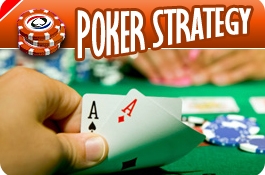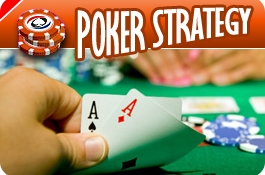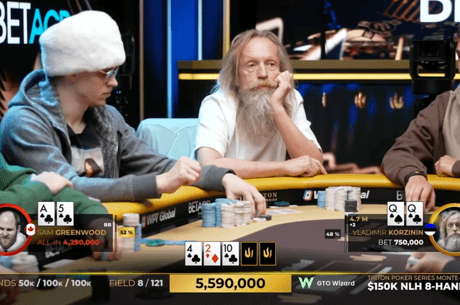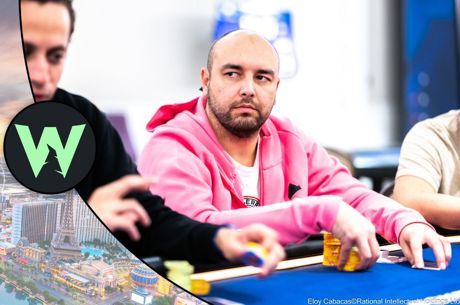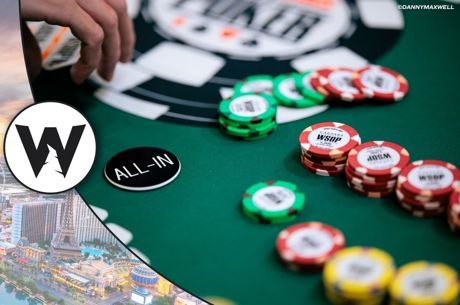Tournament Poker with Jeremiah Smith, Vol. 3: Manipulating Your Opponents
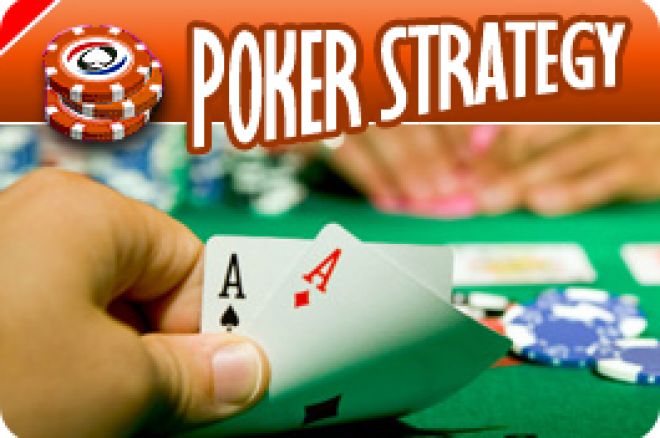
It’s possible that he just didn’t like me. After all, he had announced a few orbits earlier, “You better watch out. I’m comin’ for you.” He then leveled a beefy index finger in my direction, which was… well, kind of scary. I wasn’t trying to get under his skin; I merely wanted to take his chips.
There were several deep stacks at the table, so I felt comfortable opening with 7♣5♣ in the hijack with my standard 2.5x raise. I didn’t mind the call from the cutoff, but things started getting dicey when the button and small blind also joined the party. I was about to ask the next table over if they wanted to take the flop with us when my finger-pointing friend came to life. Mr. Pointy declared a raise; both his voice and body language communicated he had a real hand.
I was getting ready to toss mine into the muck when something made me pause. Mr. Pointy had a big hand. Mr. Pointy had over 100 big blinds. Mr. Pointy was steamed at me. I had Mr. Pointy covered. I had a low-risk, high-reward, cash-game type of hand in a cash-game type of situation (very deep stacks). Most of the time, he’s going to bet the flop, I’ll whiff and make an easy fold. But, those other times…
The action happened fast, four quick beats of a drum: flop — bet — shove — call.
Let’s get this out of the way: there’s no question that flopping a straight on a 9-6-8 board means you’re running good. However, if I had taken any other line on this hand, delayed my action at all, it might’ve given Mr. Pointy the opportunity to think things through and make a good laydown (please note that I said a good laydown, and not a hard laydown — if he starts thinking about my hand instead of his own, he can fold somewhat easily). Instead, Mr. Pointy practically beat me into the pot for all his chips holding one pair. Sure, pockets kings are a big pair—but it’s still only one pair on a rather scary board.
We were both so deep for this stage of a tournament that there’s just no way that many chips should go into the middle with a one-pair hand. If I took my time, mulling over my options my opponent could’ve decided, “This guy’s a clown but he could have two pair, a set, or some kind of combo draw. Even if he does have a draw, I’ve got a really big stack so I can wait for a better spot.” Even worse, if I began Hollywooding, I very well could have set off some warning bells in his thought process.
Poker is all about patterns, a game of rhythm. If you disrupt the familiar pattern, you disrupt their rhythm. Dictate the rhythm and you dictate your opponents’ actions. When I was a tournament reporter traveling the circuit, I used to keep a notebook of little tips and tricks I would see the pros use. Somewhere in the middle of the notebook, I scribbled this quick thought, “Act fast, they act fast. Slow down, they slow down.”
In other words, if you don’t want your opponent to think about what he should do, don’t take the time to think about what you want to do. Conversely, if you want to make them go into the tank, be very careful, thoughtful, and deliberate with your actions. Against a tight opponent, you might do this before making a big semi-bluff if the board has a scary texture to it. This gives your opponent the opportunity to think through all the possible hands you may have, and may force him into a laydown.
By manipulating something as simple as timing, you can manipulate your opponents into acting in the manner you want them to. In one sense, it’s no different than Mr. Pointy trying to intimidate me so he can bully me around. But, this tactic actually works because it’s much less obvious; you are manipulating your opponents on a subconscious level.
I have seen veteran players apply this concept in other, more creative ways. Greg Raymer describes using this tactic en route to his main event victory in Steve Rosenbloom’s The Best Hand I Ever Played. With 50 players left, a very active Marcel Luske opened in early position. According to Raymer, “I'm thinking to myself, 'If I look down and see A-A or K-K, instead of just making a pot-sized raise, which would've been maybe a third of my stack, I thought I'd push in for $300,000.
"But what I'm going to do is if I look down [and see one of those hands], then really fast with kind of a caveman grunt, I'm going to push all in. Then I'm going to sit there really, really passive, so it's going to look like a scripted play, and it is scripted.
"That way, he's going to say, 'That looked scripted; he just decided to re-raise me no matter what.' So, if he has A-10 or K-Q or some decent hand, he's going to call.
"I looked down. I did happen to find aces. I did the caveman grunt. And then sat there. It actually took quite a while, but he called with A-K."
It goes without saying that you should use these types of moves sparingly. Otherwise, they begin losing their effectiveness. Sometimes it just doesn’t matter how crafty you are — the cards will determine the outcome. But, if you can personalize them and apply them in the right situation, you might just pick up the kind of pot that sends you on your way to the final table.
Veteran poker writer Jeremiah Smith proved his own mettle at the table with his own deep run in the 2008 WSOP Main Event. Jeremiah shares tournament insights weekly with PokerNews readers.

